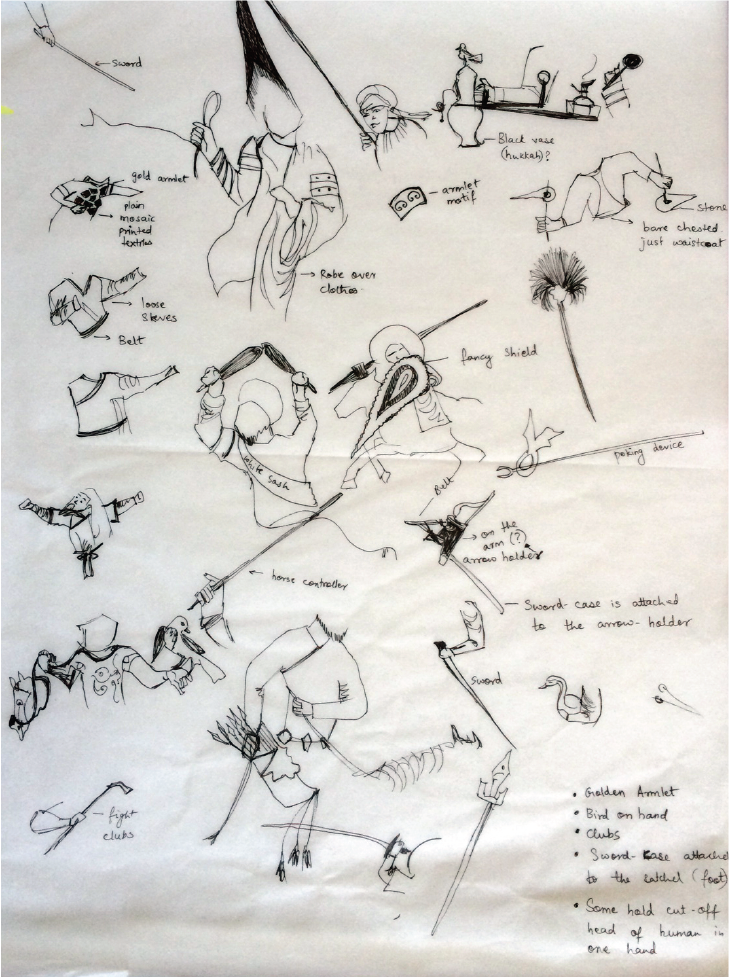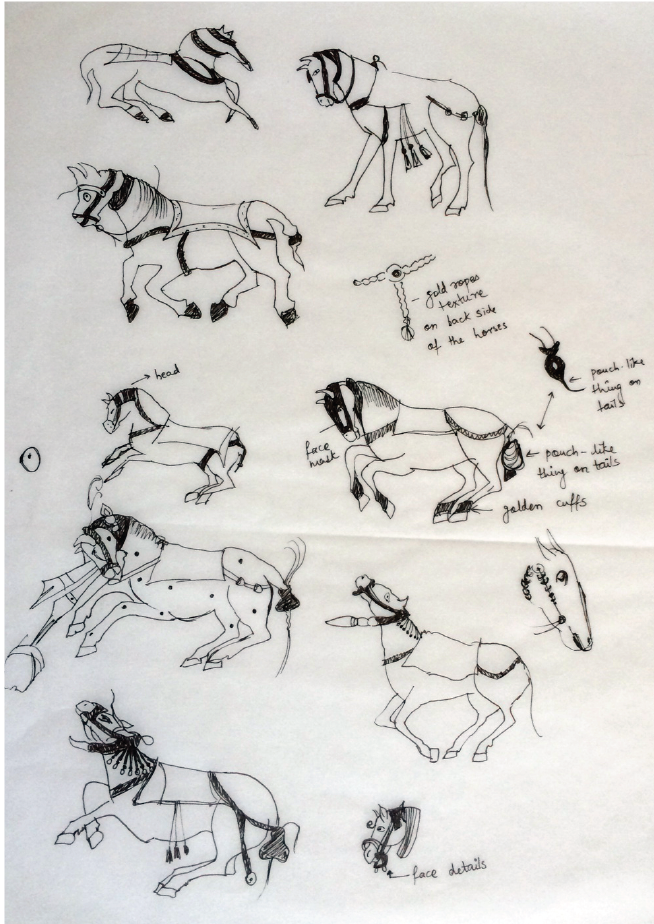The Metropolitan Museum of Art aquired this artwork of Seljuk horse-riders found in a cave in Iran, discovered in a very delicate condition. My role in this project was to treat the (digital copy of the) painting (which was broken into a number of pieces) like a puzzle, study dierent types of headgears, horses, clothes and other gestural cues from references (like other paintings/seljuk motifs/artwork in the museum), that can help us piece it together, before it goes to the object conservation department for further preservation.

The pieces of the artwork, clubbed together based on work done so far
Observation on Clothes
This was the toughest part of the painting, as most of the pieces in the middle portion of the painting were missing. Since there is one head visible so far, we are trying to piece together parts that might form drapes

Obsevations on the Headgear
Sketches and observations of Different types of Headgear, that might have been part of the painting. After studying and observing other Seljuk Horse-rider paintings and pottery, these sketches were put on one paper for clarity, and to see the possible potential options for the head in the painting.
For example, after comparing these sketches to the broken pieces, some of the pieces could be clubbed together and showed a head with a red cap and a halo around it, which could possibly mean the horse-rider was someone important, which would then mean there would be more horse-riders around him (if he is the King), and so we would find pieces that would have traces of more faces.

Observations on Horses
The continuous piece of that golden belt on the horse's body was a good indication of how the smaller pieces might fit together, and how many horses could there be in the painting



